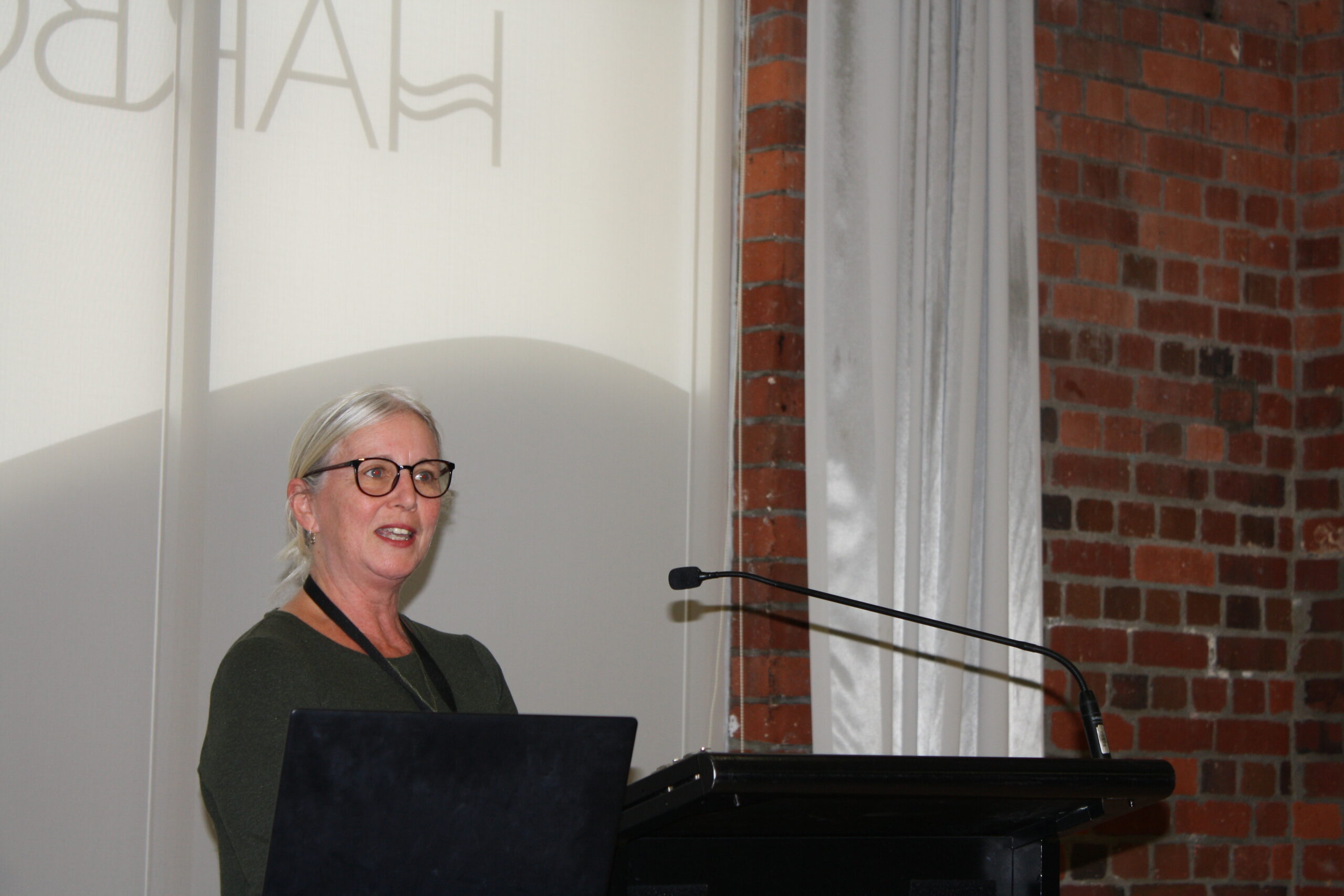Set up after a 2006 NZNO-driven inquiry into safe staffing, the unit has been a key driver of the safe staffing tool, care capacity demand management (CCDM) — a tool which has yet to be fully adopted throughout New Zealand hospitals 18 years on.
“The only places in the world where we’ve seen any kind of mandated system around resourcing is where strong nursing unions have exercised industrial leverage to achieve it,” Lawless told NZNO’s college and section day recently.
‘There is not a great deal of power in a single nurse — but there is power in the collective.’
After more than 20 years of evidence-gathering, research, speaking out — and philosophising — Lawless said she had confirmed collective action was the only way to create change.
“There is not a great deal of power in a single nurse — but there is power in the collective,” said Lawless, a long-time NZNO activist and former chair of the NZNO college of emergency nurses.

Another Yesterday
There was a time,
Not that long ago
I could come to work
Anticipating with pleasure
The day ahead
The joy to be found in making a difference
Big, or small
Was the best reward for my endeavour
There were times when I couldn’t make the difference
And that felt disappointing
But the thought of a better day tomorrow
Kept my spirit light
Now, I come to work
Knowing that today, as yesterday
And the yesterdays before
The needs will hopelessly outweigh all that I can possibly give
And that feels hopeless
Still there are days when I can make a difference
But that makes me feel… indifferent
Because I fear that if I feel
I won’t come back to face tomorrow
– By Jane Lawless
‘The power for change, if it exists at all, is in this room and organisation.’
She expressed frustration and disbelief at how the voice of nurses had been dismissed and unheard for so long, in the struggle for resourcing.
“Nurses are saying ‘this is intolerable’. And yet it is tolerated — I want to understand how we arrive at this place.”
Entering nursing some 40 years ago, she said the first few years were a “joy”. But with the 1990s came neoliberalism and roiling industrial relations. Her poem, Another Yesterday (right), published in Kaitiaki at the time, expressed some of her frustration and sadness at what was happening to her profession.
As an NZNO delegate during strike action in the late 1990s, Lawless then became involved in an NZNO-driven safe staffing inquiry before becoming burnt out and taking time off. It was around then, she started to become interested in the impact of nursing work on nurses, rather than patients, which led her into academia.
“I have always been interested in the basis of nursing — what is it that is unique? And what is the contribution that nurses make? And why is it important? And how much do we value it?”
She researched the subject of dignity in the working lives of clinical nurses, before in 2009 taking up the leadership of the SSHWU — set up to ensure then-district health board (DHB) workplaces were safely staffed for nurses and patients following the safe staffing inquiry.
Under her watch, the unit developed a clause obliging employers to listen to their staff, which became part of the DHB-NZNO collective agreement: ‘When a nurse or midwife assesses that they have reached the limits of safe practice, they cannot be required to take on further workload until it’s resolved.”
However, Lawless said that had “utterly, utterly failed”.
‘For that very brief moment nurses stepped into that light and people could see better why we need nurses.’
What is nursing?
Lawless then turned to trying to convey what nursing was — what nurses did — in the hope if those who controlled resources truly understood, they would make better staffing decisions.
“That’s the method I’ve come to call rational persuasion — if we put the evidence in front of them, why would the resources not follow?”
But that, too, failed to grain traction, leading to feelings of guilt.
She left the role in 2013, and moved overseas, where she enrolled at Southampton University and tried to develop a tool to measure when staffing levels were starting to become unsafe.
But during the 2020 COVID lockdown, after reviewing her life’s writing and research, she came to the “confronting” realisation that her tool would not be enough.
Back in New Zealand and working with the Ministry of Health during the COVID pandemic, Lawless said: “For that very brief moment nurses stepped into that light and people could see better why we need nurses.”
But then, “somehow, it all changed back”.
Nurses’ testimony ‘ignored’
Scratching her head, Lawless wondered what the problem was. Had nurses not articulated the problem well enough?
‘The only place where we’ve seen safe staffing is from strong unions.’
And if rational persuasion approach had not succeeded after so many years — would it ever?
“In the face of this worldwide, global, consistent testimony of nursing about the consequences of not being resourced adequately — and then the knowledge of what it is nursing is and does and needs — in the face of this testimony, how do we explain the non-responsiveness to the issues?”
Lawless started going down a philosophical route, eventually deciding the problem wasn’t articulation but of nurses being heard and their views taken up.
Nurses were not treated as “credible knowers”, and decision-makers felt justified in downgrading what they were hearing, she said.
‘If we put the evidence in front of them, why would the resources not follow?’
Without such credibility, it was difficult to see how a system like CCDM — which relies on nurses’ knowledge — would succeed.
Even though patients were at risk and might die, that nurses might be harmed — “that this not be privileged above things like budget — how did we arrive here?” she asked.
“If this is right — that there is this credibility question that they apply to our testimony — then one has to question whether any system that relies on rational persuasion can work.”
Collective action was the only way to address this lack of “agency”, she said.
“The only place where we’ve seen safe staffing is from strong unions,” she said. “The power for change, if it exists at all, is in this room and organisation. Because it is a strong organisation with good coverage.”
Members on the day spoke about the “sense of responsibility” they felt for patients, that made it hard to stop working in an unsafe environment; the chronic compromises in care they were making over time and the domination of paperwork.
Lawless said she hoped there would be change in the “not-too-distant future”.


